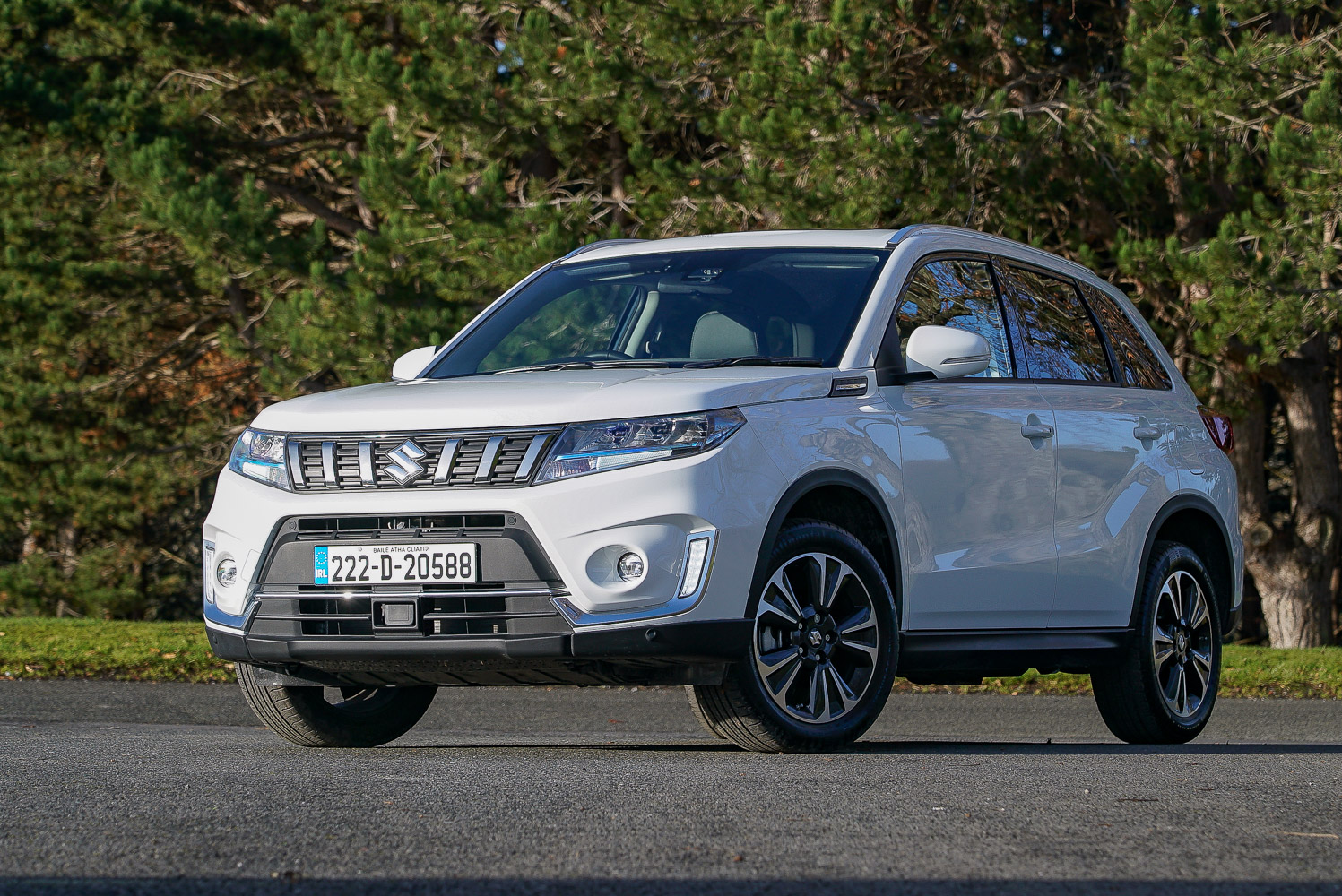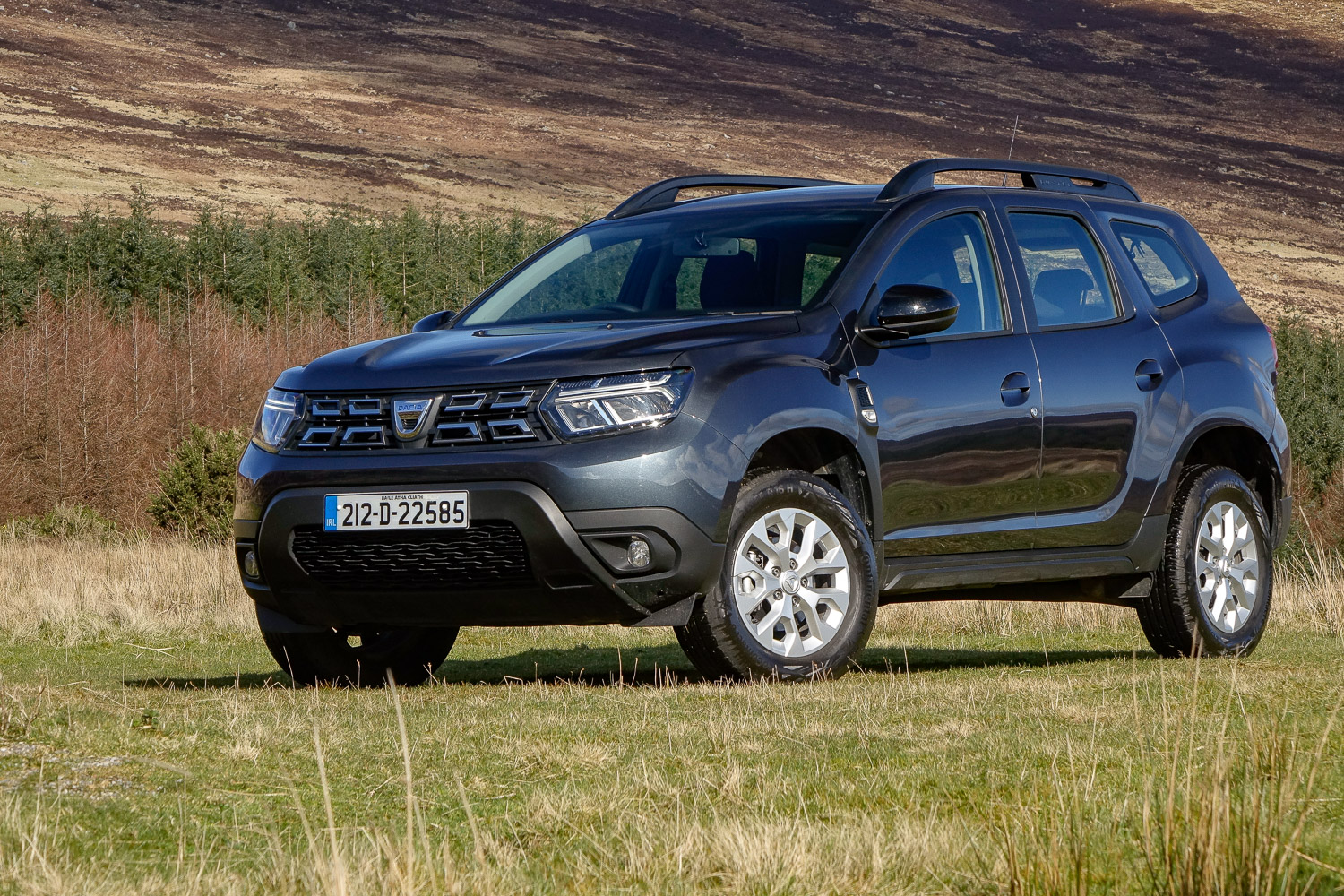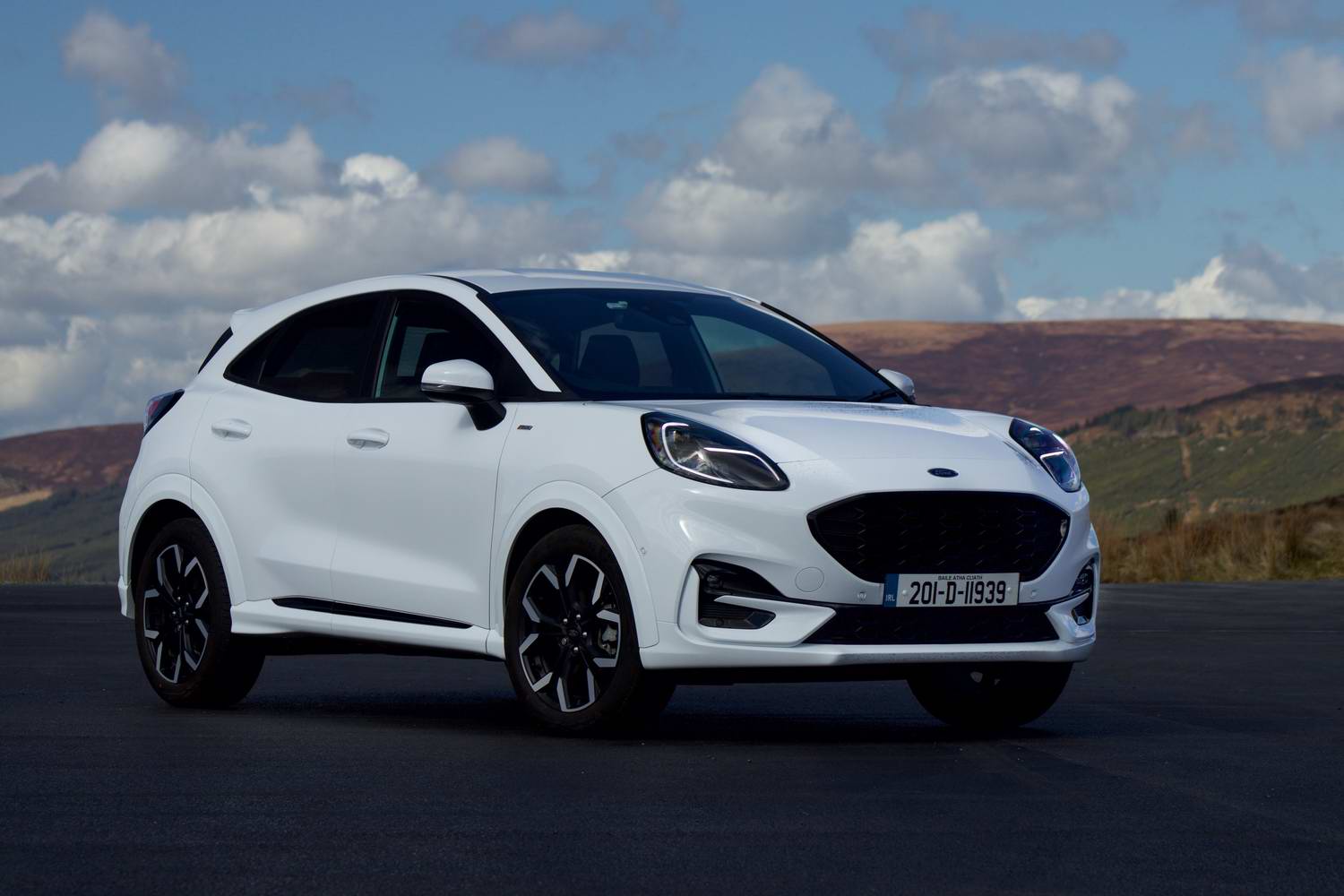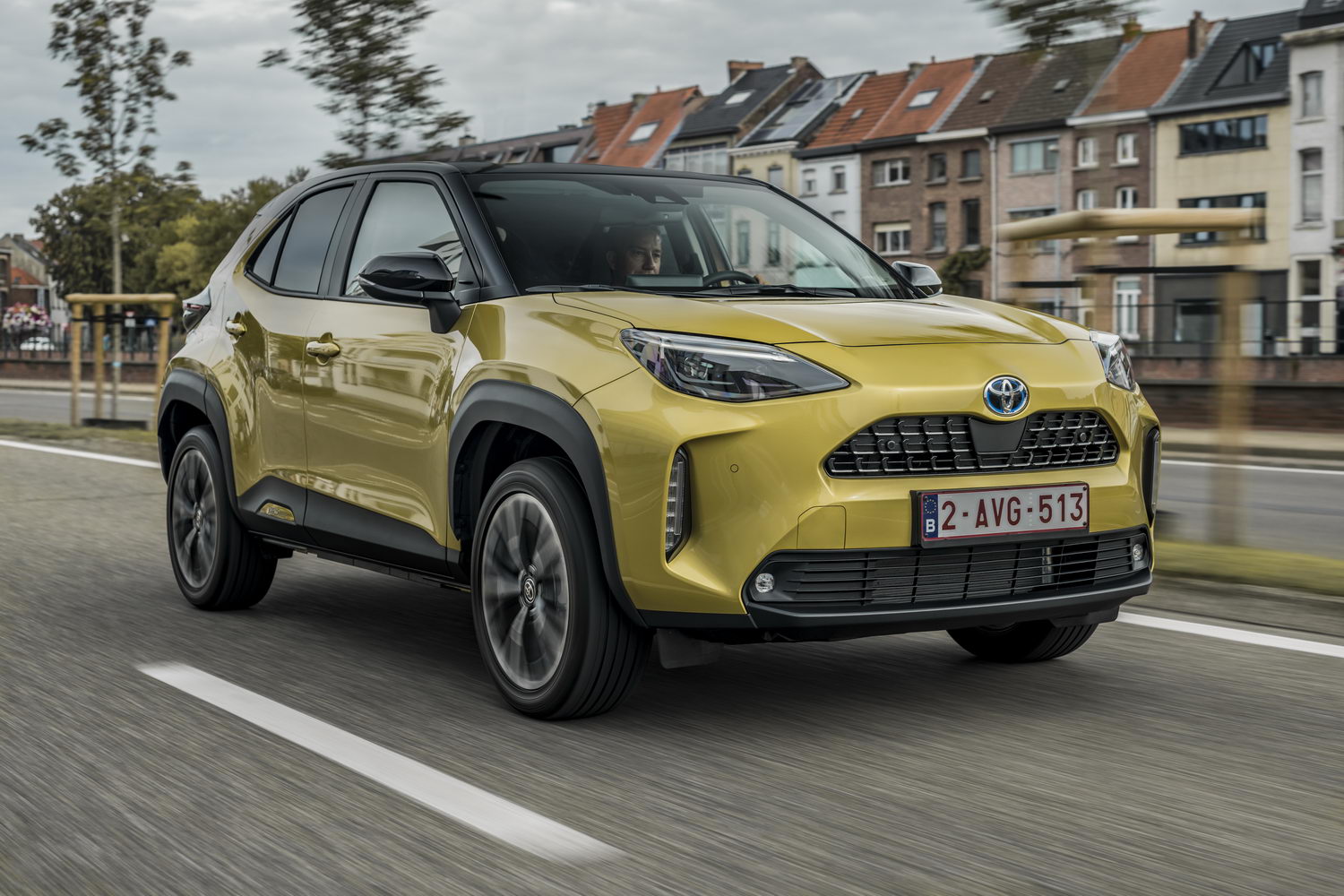Suzuki Vitara Full Hybrid overview
Often both perceived and actually a minority player in the Irish car market, Suzuki briefly broke into the top-ten sales charts in January of this year, and is currently hovering in the mid-teens - an unusually lofty position for the brand. Much of that is down to the continuing offer of zero per cent finance (in which Suzuki is pretty well the last man standing), as well as the popularity of the Vitara.
That popularity is understandable. The Vitara is a very well-priced compact crossover, and is one that still looks smart eight years on from its first introduction. It also has a four-wheel-drive option, rare for the segment, which gives it some surprisingly serious off-roading ability and that makes it an ideal car for those who need to negotiate tricky terrain, and do so on a budget. You can add to that appealing mix Suzuki's well-deserved reputation for reliability.
To all that, Suzuki is now adding a 'full hybrid' option to sit alongside the existing mild hybrid, which is based on the long-serving 1.4 turbocharged 'BoosterJet' petrol engine. The new full hybrid is, like that of rival and some-time collaborator Toyota, based around a 1.5-litre naturally aspirated petrol engine, but the Suzuki system shares nothing with Toyota, bar an ability to run for short bursts on just-electric power. It's available in both SZ-T and SZ5 trim levels, and can be optionally had with four-wheel drive.
Does the addition of a hybrid powertrain give the Vitara range a boost, and could it be enough to make Suzuki a regular top-ten seller in Ireland? Let's see...
The Suzuki Vitara model range
The Vitara line-up is pretty simple - there are two trim levels, and two engine choices, plus the option of four-wheel drive.
A basic 1.4 BoosterJet mild hybrid in SZ-T trim will cost you €27,535 and comes with radar-guided cruise control with a speed limiter, a leather-covered steering wheel, a 4.2-inch colour LCD display in a mixed digital-and-analogue instrument panel, electric front and rear windows, height adjustable driver and passenger seats, contrast stitching for the seats, automatic air conditioning, LED headlights, rain sensing wipers, heated door mirrors, a touchscreen with integrated Apple CarPlay and Android Auto, 17-inch alloy wheels, roof rails and rear privacy glass.
You can upgrade to a full-hybrid in SZ-T spec for €29,495.
SZ5 models get all of that plus polished alloy wheels, panoramic sunroof, suede seat centres, built-in navigation, keyless entry and ignition, front and rear parking sensors and electric folding door mirrors. The most affordable SZ-T model is the 1.4 BoosterJet mild-hybrid, which costs €29,655 and you can upgrade that model to AllGrip four-wheel drive for €32,340. The 1.5 full-hybrid in SZ5 trim starts at €31,495 and that can be upgraded to four-wheel drive for €33,640.
The Vitara was tested by EuroNCAP back in 2015 and it scored an impressive full-house five-star rating. However, that was eight years ago, and the safety goalposts have moved considerably since, and it's doubtful that the Vitara would score the same were it retested today. Nonetheless, there's plenty of standard safety equipment, including that active cruise control, lane departure warning, traffic sign recognition, two ISOFIX points in the rear seats, a tyre pressure monitoring system, curtain airbags and a driver's knee airbag.
Suzuki currently has that rare thing - a zero per cent finance offer in place for the Vitara (as well as other models in its range), and monthly repayments start from €302 with a deposit of €5,587 and a final payment of €11,453. You can find more details on that on the Suzuki Ireland website.
The Suzuki Vitara Full Hybrid interior
If there's one area where the Vitara really shows its age, it's in the cabin, and sadly it's something that really lets the car down. On the upside, our SZ5 test car came with excellent front seats that have suede-style fabric centres printed in an interesting tyre-tread-style pattern and these proved comfortable on long journeys. The driving position, helped by a reach-and-rake adjustable steering wheel, is also good.
Sadly, space is not good and you can tell that the Vitara is a car compromised by older packaging techniques. Space in the rear seats is quite tight, and you're going to struggle to fit four tall adults in total in the car with any sense of comfort. The boot is also really very small - as standard, it measures a just-about-acceptable 362 litres, but that's trimmed to a tight 289 litres in this full hybrid model, as the battery pack eats into the available space.
Up front, there's no doubting that everything is very well bolted together, but the sad fact is that the materials Suzuki uses in the Vitara's cabin are nowadays looking very tired indeed. While the main dashboard moulding is just about acceptable, other surfaces - especially the tops of the doors - look downright cheap, as do the column stalks behind the steering wheel.
The main analogue instruments are fine, but the digital screen in between them, in spite of offering much useful information, is awkward in its layout and tricky to use as you have to push the small trip reset button - mounted on the side of the instrument panel - to change the display and, when you have the cruise control activated, alerts from the speed sign recognition system push your digital speedometer off the screen.
The touchscreen in the centre of the dash was once a Suzuki USP, as the brand was originally one of the few that offered a screen as standard equipment in the class, but those days are long gone and now, the software and graphics just look tired and are fiddly to use. At least you can plug in your phone and use Apple CarPlay or Android Auto, which does help. There's only one USB socket though, and a pair of 12-volt connectors, one in the storage box under the front seat armrest and another in the boot. Rear-seat passengers get no plug-in options at all. On the plus side, the heating and ventilation controls, physical buttons as they are, are easy and intuitive to use and you get a useful storage area at the base of the centre console, plus a pair of well-sized cup holders. The door bins are slightly small and narrow, however, and the glovebox likewise is quite small.
The Suzuki Vitara Full Hybrid driving experience
If the interior is a Vitara weak spot, then the driving experience might be yet weaker still. Put simply, the Vitara is an ageing design now, and in a class that has improved out of all proportion in the intervening years since its arrival. When the Vitara first hit the market in 2015, it was up against pretty scant opposition, but now it has to contend with the likes of the Toyota Yaris Cross, the Ford Puma, the Peugeot 2008, the Opel Mokka, the Citroen C3 Aircross, the Hyundai Bayon, the Kia Stonic, the Volkswagen T-Cross and so many more. Put simply, the Vitara can't compete anymore.
The biggest culprit here is the six-speed automatic gearbox that comes as standard with the hybrid system. It's glacially slow at shifting between gears, which leaves you with an irritating head-nodding movement especially when shifting from first to second and second to third under acceleration. It doesn't help that the 1.5-litre petrol engine's voice is too coarse and rough-edged when it inevitably revs up. Performance is pretty leisurely too, with 0-100km/h taking more than 12 seconds.
Is there a fuel economy compensation? Not especially - Suzuki quotes 5.4 litres per 100km, but we averaged a much less impressive 6.5 litres per 100km. Refinement is poor too. Aside from the racket made by the engine, there's copious wind and tyre noise and the ride quality is too firm for the Vitara's supposed home-ground of urban motoring.
All of this is thrown into sharp relief by a back-to-back test drive with the new Suzuki S-Cross Full Hybrid. True, it has the same dreadful gearbox, but it's a vastly more refined car, with a far more comfortable ride and more composed handling. Given that the S-Cross can be had in a basic, but still very-well equipped, spec for the same price as this SZ5 Vitara, it's an uncomfortable comparison for the smaller car, to say nothing of how it competes with its more direct rivals.
If there's a silver lining (or two) it's that the steering is sharp and accurate, so it is possible to extract some enjoyment from a cross-country drive (until the gearbox intervenes again) and that Suzuki's build quality and reliability is legendary, so the Vitara should last a long time and still be providing solid service for many years to come.
Our verdict on the Suzuki Vitara Full Hybrid
The Vitara's problem is that it's just too old now, and needs replacement rather than just a new engine option. That's especially demonstrated by how much better the same engine feels in the Suzuki S-Cross, which, while it shares some bits with the Vitara, is a much newer, more sophisticated design. Rugged reliability and handsome looks are on the Vitara's side. Time isn't.
What do the rest of the team think?
I'm not sure I'd call the Vitara handsome - it's a meek looking car to my eyes. Nonetheless, I got on better with its interior space than Neil did, finding plenty of rear headroom and legroom and the only pinch point being the back seat's width (well, if you want to try to fit more than two people in). Elsewhere, yes, its cabin is on the rugged side of things, but I guess it'll look the same after 10 years of hard use... Can't be many cars of this size with the option of all-wheel drive, though, so it could make for a usefully compact workhorse. Shame the powertrain is so poor at anything above urban speeds. I agree with Neil's summary - the Vitara just feels old now.
Shane O' Donoghue - Editor

























